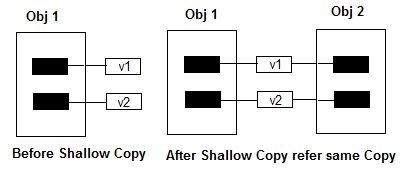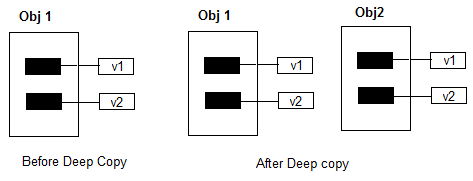What is Shallow copy ?

Shallow copying is creating a new object and then
copying the non static fields of the current object to the new object.
If the field is a value type, a bit by bit copy of the field is
performed. If the field is a reference type, the reference is copied but
the referred object is not, therefore the original object and its clone
refer to the same object. A shallow copy of an object is a new object
whose instance variables are identical to the old object. In .Net
shallow copy is done by the object method MemberwiseClone().
The situations like , if you have an object with
values and you want to create a copy of that object in another variable
from same type, then you can use shallow copy, all property values which
are of value types will be copied, but if you have a property which is
of reference type then this instance will not be copied, instead you
will have a reference to that instance only.
What is Deep copy ?

Deep copy is creating a new object and then
copying the non-static fields of the current object to the new object.
If a field is a value type, a bit by bit copy of the field is performed.
If a field is a reference type, a new copy of the referred object is
performed. A deep copy of an object is a new object with entirely new
instance variables, it does not share objects with the old. While
performing Deep Copy the classes to be cloned must be flagged as
[Serializable].
Deep copy is intended to copy all the elements of
an object, which include directly referenced elements of value type and
the indirectly referenced elements of a reference type that holds a
reference to a memory location that contains data rather than containing
the data itself.
